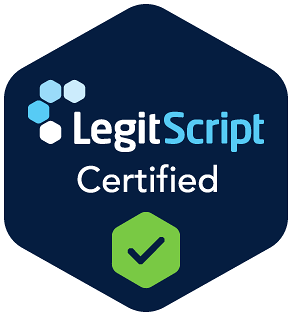Food Addiction Treatment: Restoring Balance & Well-Being
Food addiction programs now go well beyond meal plans and calorie trackers. Today’s centers combine medical oversight, nutrition counseling, and behavioral health therapy to help people restore healthy eating patterns, lift mood, and feel better overall.
Licensed therapists provide individual and small-group counseling and weave in experiential options such as yoga, art therapy, and mindfulness practice to strengthen coping skills and establish consistent, healthy daily routines.
With time, binge episodes fade, energy evens out, and confidence rises whether navigating a grocery store or sitting down to a holiday meal.
Key Points
- Food addiction does not yet have an official DSM diagnosis, but research indicates it has similar hallmarks to conditions such as binge eating disorder.
- In New Jersey, comprehensive care includes evidence-based therapies like CBT, DBT, and nutritional rehabilitation.
- Food addiction can have lasting impacts on both physical and mental health.
- Integrated care plans and ongoing support lead to improved long-term outcomes.
Understanding Food Addiction
While food addiction is not yet an official DSM diagnosis, peer-reviewed research positions it alongside binge eating disorder as a
form of behavioral addiction.[1] Key markers include:
- Intense cravings for high-sugar or high-fat foods that persist even when hunger is satisfied.
- Loss of control—eating larger amounts or for longer periods than intended.
- Continued overeating despite negative consequences, such as weight gain, medical warnings, or social embarrassment.
- Withdrawal-like symptoms, including irritability or anxiety, when attempting to restrict trigger foods.
Brain scans show that simply looking at favorite snacks sparks the brain’s reward center (the nucleus accumbens), just like drug cues do.[2] That dopamine rush fuels the urge to keep craving and eating.
Common Warning Signs of Food Addiction
- Secretive or night-time binges hidden from family or roommates
- Strong feelings of guilt, shame, or hopelessness after overeating
- Rapid weight gain, metabolic syndrome, or chronic digestive discomfort
- Social withdrawal to avoid eating in front of others or facing comments about weight
- Repeated, unsuccessful attempts to diet, fast, or “detox,” followed by rebound overeating or binge sessions
The Impact of Food Addiction
Compulsive overeating strains nearly every body system.[3] Excess calories elevate body mass index (BMI), increasing risk for type 2 diabetes, hypertension, sleep apnea, fatty liver disease, and joint degeneration.
Blood sugar spikes can produce energy crashes, mood swings, and constant fatigue that erode quality of life. Emotionally, many individuals experience chronic guilt and poor body image, which may lead to isolation or avoidance of social activities involving food, like birthday parties, family dinners, or business lunches, further limiting support networks.
Compulsive overeating also affects mental health—depression, anxiety, or unresolved trauma often ride along.[4] A sugary bite may settle frayed nerves for a moment, but guilt quickly slips in and nudges the cycle forward again. When ADHD or OCD enter the picture, cravings grow louder, and alcohol or other substances can drop the last bit of restraint, making midnight fridge raids that much harder to resist.
Take the first step towards recovery.
Our representatives are standing by to help you start healing today.
Evidence-Based Treatment for Food Addiction
- Cognitive Behavioral Therapy (CBT) – In weekly one-on-one sessions, clinicians help clients challenge thoughts like “Only dessert relieves stress” or “Parties require comfort food.” Simple swaps—deep-breathing drills, quick walks, journaling—paired with balanced meal plans build better coping skills and weaken food-based reward loops.
- Dialectical Behavior Therapy (DBT) – Small-group skills classes focus on mindfulness, distress tolerance, and emotion regulation. Participants practice watching cravings without judgment, naming the feeling underneath, and letting urges crest and fall. Mindful eating logs track hunger, fullness, and mood before and after meals.
- Nutritional Rehabilitation – Registered dietitians create balanced menus that stabilize blood sugar, fill nutrient gaps, and scrap “good vs. bad” food rules. Portion cues, grocery-store walk-throughs, and cooking demos turn guidance into daily habits, easing mealtime stress.
- Motivational Interviewing (MI) – Short, collaborative check-ins draw out each person’s own reasons for change—lower A1C, stronger workouts, fitting into favorite clothes—and break them into realistic weekly goals.
- Medication Management (optional) – When depression, anxiety, or ADHD complicate eating patterns, prescribers integrate evidence-based medications so biological and behavioral approaches reinforce each other.
Levels of Care for Food Addiction Rehab
Evidence-based treatment for food addiction can take several forms. Treatment tracks may include:
- Intensive Outpatient Program (IOP) – Three to five sessions each week deliver a mix of therapeutic treatments on a schedule that can fit around work or classes. This track balances clinical structure with daily responsibilities, helping participants strengthen coping strategies and establish healthier routines.
- Outpatient Program (OP) – Meeting just once or twice a week, clients drop in for one-on-one check-ins, small peer groups, and optional family sessions. The lighter rhythm keeps accountability intact while giving participants plenty of space to practice new habits on their own.
Across every level, licensed clinicians layer evidence-based and experiential methods to provide flexible, comprehensive care without requiring a break from everyday obligations.
Building a Personalized Eating Disorder Treatment Plan
A thorough clinical assessment begins the process, with licensed clinicians reviewing eating patterns, triggers, mental health history, and overall wellness. Collaborative goal setting follows, as clients and their treatment team define clear, measurable milestones to guide progress and keep therapy focused.
Family therapy invites loved ones into guided sessions to strengthen communication and support at home.
Experiential therapies such as yoga, art, and mindfulness help calm the nervous system, encourage emotional expression, and build healthier routines.
An aftercare roadmap is created prior to discharge that links clients to alumni groups, community supports, and scheduled check-ins to maintain progress after formal treatment ends.
Paying for Food Addiction Treatment
Most families start with insurance. Once the deductible is met, many out-of-network PPO plans reimburse a large share of therapy and nutrition costs.
Tax-friendly options—Health Savings Accounts (HSAs) and Flexible Spending Accounts (FSAs)—can also cover sessions and dietitian visits. Medicaid and state grants sometimes fund evidence-based eating-disorder care, particularly for adolescents.
Every policy has its own caps, copays, and pre-authorization requirements, so speaking with the treatment center admissions team is an important step in understanding total out-of-pocket expenses.
Frequently Asked Questions About Food Addiction Treatment Centers
How does outpatient food addiction rehab work?
Clients in an outpatient treatment program for eating behaviors attend scheduled therapy, nutrition, and skills training sessions while maintaining work or school commitments. Intensity of day treatment tapers as coping skills and balanced eating habits solidify.
Are food addiction treatment centers covered by insurance?
Many commercial plans reimburse evidence-based therapies under behavioral healthcare benefits; exact coverage depends on deductibles, session caps, and authorization rules.
What therapies help binge eating and compulsive overeating?
Core interventions include CBT, DBT, mindful eating training, and structured meal planning, often supported by medication management for co-occurring mood disorders.[5]
What aftercare resources help people stay on track?
Alumni gatherings, one-to-one peer mentoring, nutrition-logging apps, and community meetings such as Overeaters Anonymous all provide places to share progress, troubleshoot setbacks, and keep healthy routines from slipping.
Can loved ones be involved in meal planning and support?
Yes. During family sessions, therapists coach relatives on encouraging language, set up clear mealtime routines, and point out early signs of relapse so the whole household can respond quickly and confidently.
Sources
[1] [3] Adams, R. C., Sedgmond, J., Maizey, L., Chambers, C. D., & Lawrence, N. S. (2019). Food Addiction: Implications for the diagnosis and Treatment of Overeating. Nutrients, 11(9), 2086. https://doi.org/10.3390/nu11092086
[2] Understanding the brain’s response to sugar could help treat obesity | National Center for Advancing Translational Sciences. (n.d.). https://ncats.nih.gov/pubs/features/understanding-brains-response
[4] Horsager, C., Færk, E., Lauritsen, M. B., & Østergaard, S. D. (2021). Food addiction comorbid to mental disorders: A nationwide survey and register‐based study. International Journal of Eating Disorders, 54(4), 545–560. https://doi.org/10.1002/eat.23472
[5] Mars, J. A., Iqbal, A., & Rehman, A. (2024, August 11). Binge eating disorder. StatPearls – NCBI Bookshelf. https://www.ncbi.nlm.nih.gov/books/NBK551700/



